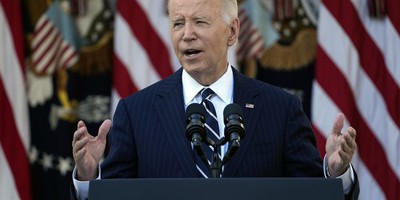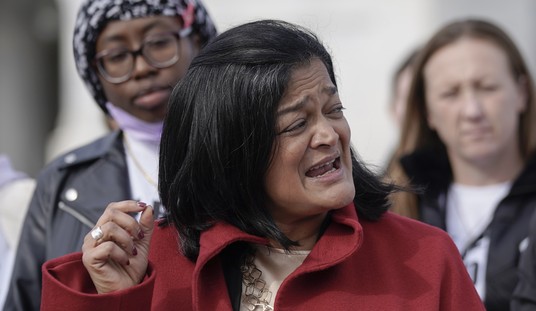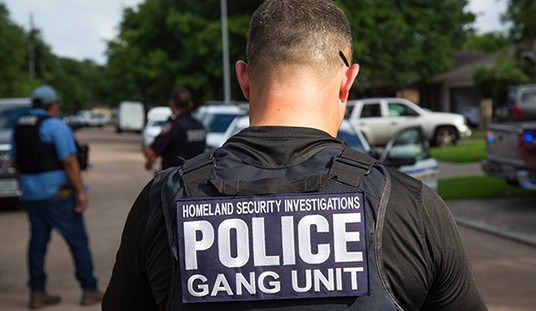WASHINGTON -- Twenty-five years ago this week, an intelligence report crossed my desk warning that Hezbollah terrorists in Lebanon's Bekka Valley were preparing a major attack. Two months prior -- April 18, 1983 -- a Hezbollah truck bomb had exploded in front of the U.S. Embassy in Beirut, killing 63 and wounding another 120. With this grim event in mind, we launched an "all-source" effort to determine the nature of the planned attack, the timing and the target. We failed.
At 6:22 a.m. Sunday, Oct. 23, 1983, the killers carried out their assault. A single terrorist in a Mercedes truck loaded with explosives crashed into the U.S. Marine compound near the Beirut Airport, turned into the lobby of the four-story headquarters, and detonated his lethal cargo. The blast brought down the building, killing 241 Americans and wounding 81 more. Two minutes later, a similar bomb exploded beneath a nearby French paratrooper barracks, killing 58. Until 9/11, it was the deadliest terror attack against Americans in history.
Since the truck-bomb attack on the Marines in Beirut, we have taken to calling these types of terror weapons "vehicular-borne improvised explosive devices," or "VBIEDs." In 1993, 10 years after Beirut, Islamic terrorists in New York used a VBIED to bomb the World Trade Center, killing six and wounding 1,042. The same kind of weapon was used in the 1996 attack on the Khobar Towers in Saudi Arabia to kill 19 and wound 515. By 1998, al-Qaida had made the VBIED their weapon of choice, using them for nearly simultaneous attacks on the U.S. embassies in Dar es Salaam, Tanzania, and Nairobi, Kenya, killing more than 200 and injuring more than 4,000.
While covering U.S. troops in Iraq and Afghanistan for Fox News, I have been an eyewitness to nearly a dozen VBIED attacks. Last week, a suicide terrorist driving a small car swerved into the main gate at the Indian Embassy in Kabul, Afghanistan. When security officers moved to stop him, the driver detonated his deadly cargo, blowing himself and 41 others to pieces. Had the VBIED gone off inside the compound, the carnage undoubtedly would have been even worse.
Recommended
We have learned that VBIEDs are difficult to detect, hard to deter, and when they are detonated in an enclosed space, they're incredibly deadly. Bloody experience also has taught us that the best way to prevent this lethal destruction is to keep vehicles well away from buildings that are potential targets. Unfortunately, it is a lesson we may learn again -- in our nation's capital.
Today, Pennsylvania Avenue is a maze of bollards, vehicle barriers, high fences and heavy gates. Without the appropriate pass, it is practically impossible to get a vehicle anywhere near the White House or any other federal building. In the parlance of security specialists, this is called "offset protection." Regrettably, that kind of safeguard is lacking at one of the busiest buildings in Washington -- one that I use nearly every week: Union Station.
The 101-year-old landmark is a terminus for 4.1 million Amtrak passengers a year. Annually, more than 25 million tourists, Metro and regional-rail commuters pass through the facility. Reflecting bloody experience in Madrid, Spain, and London, trains arriving and departing from platforms behind and beneath Union Station are patrolled by armed law officers. Yet the front of Union Station practically invites attack by a terrorist driving a VBIED.
Unlike other public buildings in Washington, including our nearby Fox News bureau, there are no barriers to prevent a vehicle from turning off the street and into the front entrance of Union Station. Worse, the nearest vehicle lane -- a taxicab rank -- is less than seven feet from the face of the structure. In short, there is no "offset protection" whatsoever. You don't have to be paranoid to envision a VBIED bringing down the 96-foot ceilings and turning the busy lobby into a charnel house.
"Why," I asked Amtrak officials, "are vehicles allowed so close to the station entrance?"
The response came as fast as a trip to Manhattan on the Acela -- and straight from the front office of Amtrak's CEO and president, Alex Kummant. "Amtrak completely agrees that additional protection against vehicle-borne improvised explosives should be deployed at Union Station," wrote Cliff Black, the chief of corporate communications. He also noted, "Amtrak has requested that the National Capital Planning Commission (NCPC), provide a permit for the railroad and station management to install added protections."
Amtrak -- a "tenant" at Union Station -- even has offered to pay for security measures that would prevent a VBIED from crashing into the building -- to no avail. Apparently, the "owner" of the property -- the Department of Transportation -- can't make it happen, either. Worse, the NCPC -- and the half-dozen other federal and local bureaucracies that purport to have a say in the matter -- don't seem to care as much about security as the railroads using the station do.
Had Amtrak officials not promised to take "immediate, interim measures to prevent VBIED attacks," I would not have acknowledged this vulnerability publicly. But until somebody does something smart, the millions of us who pass through Union Station had better move fast through the lobby, pray for no VBIEDs, and think: "Beirut."
























Join the conversation as a VIP Member